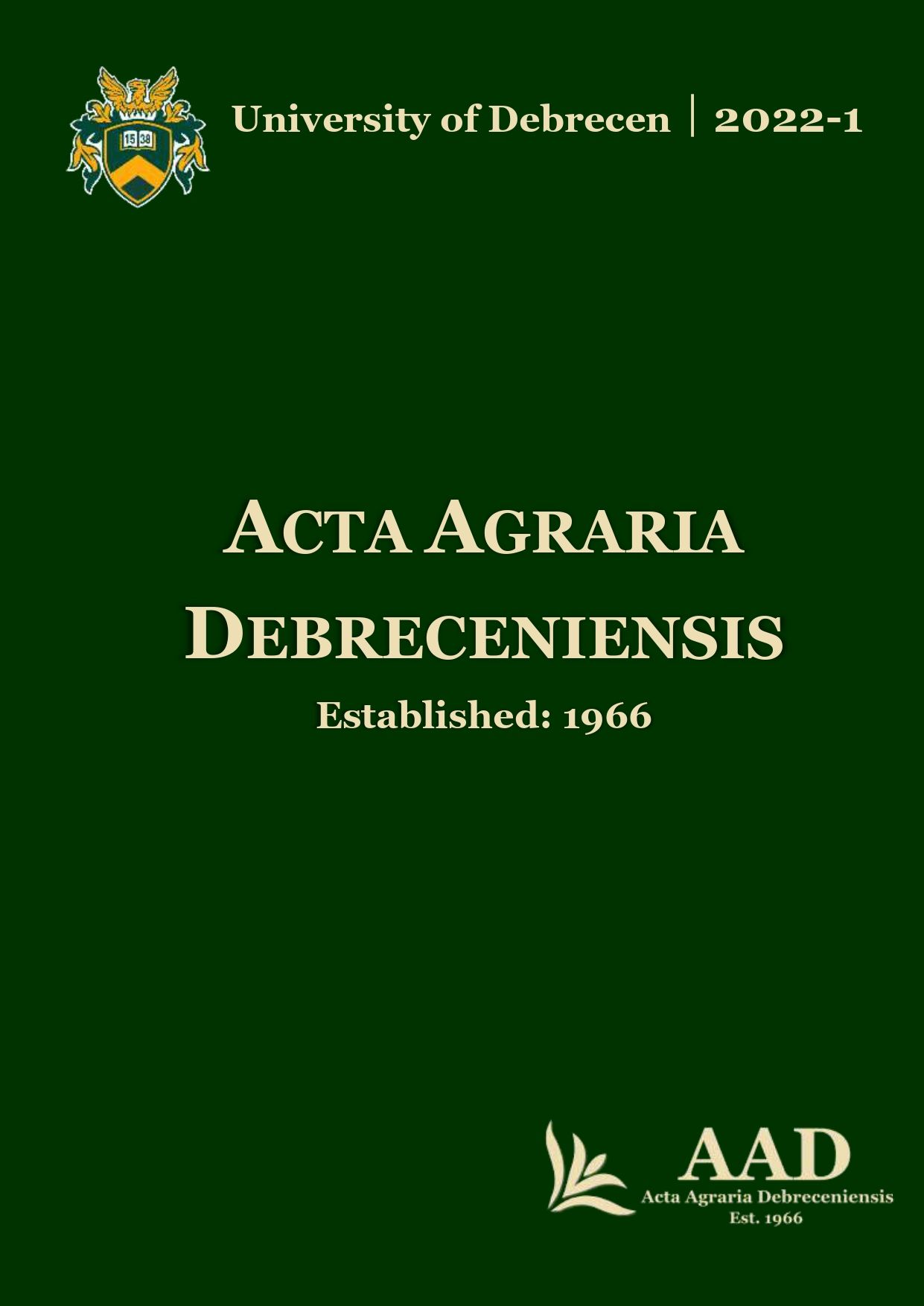Early evaluation of use of fermented chicken manure products in practice of apple nutrient management
Authors
View
Keywords
License
Copyright (c) 2022 by the Author(s)

This work is licensed under a Creative Commons Attribution 4.0 International License.
How To Cite
Accepted 2022-03-31
Published 2022-05-26
Abstract
According to the Green Deal efforts, the importance and relevance of organic fertilization will increase in the near future. Therefore, the investigation of the effects of different organic fertilizers on soil productivity and nutrient supply is a priority area of agricultural research. Organic fertilizer experiment was conducted in an eight-year-old apple (Malus domestica Borkh.) orchard at Debrecen-Pallag. In the trial Pinova cultivar was used. In this study, two different fermented chicken manure products were added to the soil (in 20 cm depth) to test their effects on soil nutrient status, plant uptake and fruit quality. It was found that the applied treatments slightly increased the pH and nutrient levels in almost all cases, but significant effect was not observed in all treatments compared to the control. Leaf nutrient contents (N, P, K, Ca and Mg) were measured in the experiment. Leaf nutrient status was not affected by the fermented chicken manure treatments. However, used treatments had strong effects on the fruit characteristics and inner parameters, such as fruit diameter and Brix value. Moreover, it was established that the applied organic fertilizers increased the yield significantly.
References
- Bernal, M.P.–Alburquerque, J.A.–Moral, R. (2009): Composting of animal manures and chemical criteria for compost maturity assessment. A review. Bioresour. Technol., 100 (22), pp. 5444–5453.
- Bolan, N.S.–Szogi, A.A.–Chuasavathi, T.–Seshadri, B.–Rothrock, M.J.–Panneerselvam, P. (2010): Uses and management of poultry litter. World's Poultry Science Journal, 66(4), pp. 673–698.
- Cordovil, C.M.D.S.–Coutinho, J.–Goss, M.–Cabral, F. (2005): Potentially mineralizable nitrogen from organic materials applied to a sandy soil: fitting the one‐pool exponential model. Soil Use and Management Vol.21. (1) pp. 65–72.
- Fang, M.–Wong, J.W.C.–Ma, K.K.–Wong, M.H. (1999): Co-composting of sewage sludge and coal fly ash: nutrient transformations. Bioresour. Technol. 67, pp. 19–24.
- Fischer, H.M.–Schmadlak, J.–Fischer, C.M., (2000): Apple Tree Named ‘Pinova’. United States Patent. Pub. No.: US00PP11601P. Patent Number: 11,601.
- Haga, K. (1999): Development of composting technology in animal waste treatment-review. Asian Austral. J. Anim. Sci. 12 (4), pp. 604–606.
- Herrero, M.–Thornton, P.K. (2013): Livestock and global change: Emerging issues for sustainable food systems, P. Natl. Acad. Sci. USA, 110, 20878–20881.
- Hwang, H.Y.–Kim, S.H.–Kim, M.S. (2020): Co-composting of chicken manure with organic wastes: characterization of gases emissions and compost quality. Appl Biol Chem 63, 3 https://doi.org/10.1186/s13765-019-0483-8
- Jackson, M.L. (1958): Soil Chemical Analysis; Prentice Hall Inc.: Englewood Cliffs, UK; 546 pp.
- Moral, R.–Paredes, C.–Bustamante, M.A.–Marhuenda-Egea, F.–Bernal, M.P. (2009): Utilization of manure composts by high-value crops: safety and environmental challenges. Bioresour. Technol. 100 (22), pp. 5454–5460.
- MI-08 0468-81: Plant analyses. Orchards. Sampling, preparation of samples, storing of samples. Hungarian Standards Institution. Ministry of Agriculture. Budapest (in Hungarian)
- MSZ-08 0202-77: Sampling soils for management purposes in agriculture. Hungarian Standards Institution. Ministry of Agriculture. Budapest (in Hungarian)
- MSZ 20135:1999: Determination of the soluble nutrient element content of the soil. Hungarian Standards Institution. Budapest (in Hungarian)
- Nahm, K. (2005): Factors influencing nitrogen mineralization during poultry litter composting and calculations for available nitrogen. World's Poultry Science Journal, 61(2), 238–255. doi:10.1079/WPS200455
- Ravindran, B.–Mupambwa, H.A.–Silwana, S.–Mnkeni, P.N.S. (2017): Assessment of nutrient quality, heavy metals and phytotoxic properties of chicken manure on selected commercial vegetable crops. Heliyon, Volume 3, Issue 12, 2017, https://doi.org/10.1016/j.heliyon.2017.e00493.
- Stiles, W.C.–Reid, W.S. (1966): Orchard Nutrition Management; Cornell Cooperative Extension: Geneva, NY; Information Bull. 219.
- Tamás, J.–Gorliczay, E.–Borbély, J. (2017): Atmospheric spreading model for ammonia released from the poultry house. Analele Universitatii Din Oradea Fascicula Ecotoxicologie Zootehnie Si Tehnologii De Industrie Alimentara 15, pp. 331–338.
- Tiquia, S.M.–Tam, N.F.Y. (2000): Fate of nitrogen during composting of chicken litter. Environmental Pollution 110, pp. 535–541.

 https://doi.org/10.34101/actaagrar/1/8502
https://doi.org/10.34101/actaagrar/1/8502